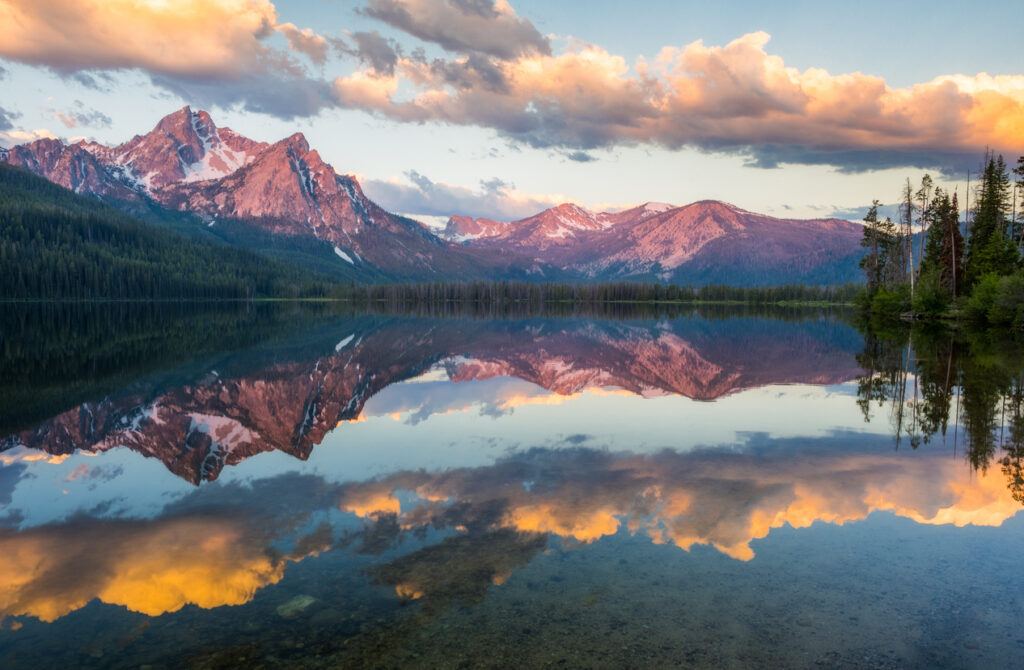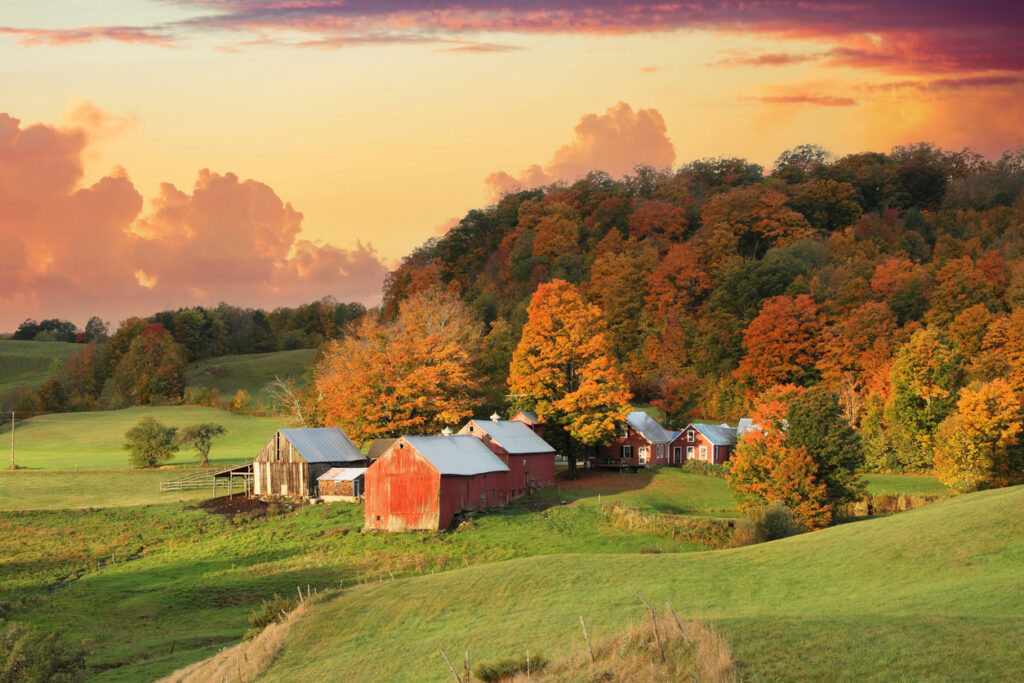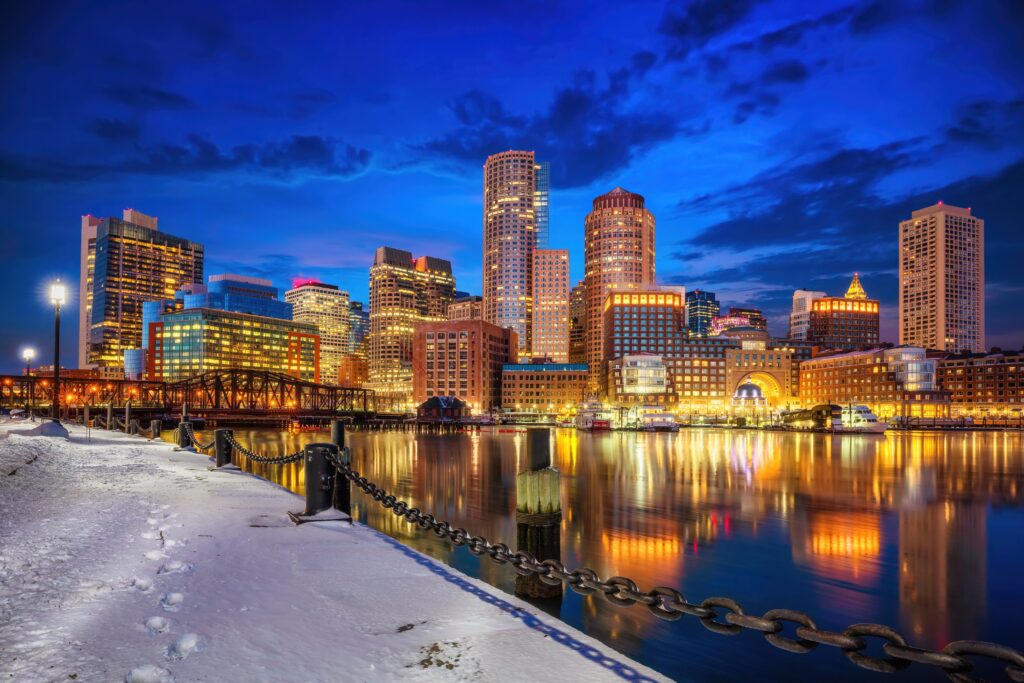The 13 Most Polluted States, Ranked

Some states face greater environmental challenges than others, with higher levels of air pollution, water contamination, and hazardous waste. Using the latest available data on emissions, toxic sites, and overall environmental health, we carefully researched and ranked the 13 most polluted states in America. We also highlight the 13 cleanest states, recognized for better air quality, cleaner water, and fewer environmental risks.
It is important to note that while these states face serious environmental issues, every one of them also has beautiful, pristine areas. Many offer stunning landscapes, outdoor recreation, and communities deeply committed to conservation and healthy living. In fact, some of these rankings may surprise you, especially in states long associated with natural beauty and an active, outdoor lifestyle.
Editor’s Note: We did our best to ensure accuracy, but if you have any input, corrections, or updates, please let us know. We value your feedback and strive to keep this information as current and reliable as possible.
13. Indiana

Indiana faces persistent environmental challenges. Industrial cities like Gary and Indianapolis regularly experience high levels of particle pollution, driven by coal-fired power plants and steel manufacturing. According to the American Lung Association, parts of Indiana register over 35 high-ozone days annually, contributing to elevated rates of asthma and cardiovascular issues.
Water quality is also a concern. The White River has been affected by industrial runoff and agricultural waste, with mercury, PCBs, and nitrates among the contaminants. Despite some progress toward clean energy, Indiana’s historical reliance on coal and industry remains a barrier to significant environmental improvement.
Source: WANE15
12. Louisiana

Louisiana’s environment is heavily impacted by its petrochemical industry. Along the Mississippi River, “Cancer Alley” is home to over 150 refineries and chemical plants. Studies show some parishes have cancer rates far above the national average, largely due to prolonged exposure to pollutants like benzene and formaldehyde.
Water quality is also declining. As the Mississippi flows south, it accumulates industrial waste, oil, and agricultural runoff. The result is widespread contamination and the formation of oxygen-depleted “dead zones” in the Gulf of Mexico, where marine life cannot survive.
Source: Johns Hopkins University
11. Texas

Texas leads the nation in industrial emissions, with cities like Houston and Port Arthur facing severe air quality challenges. Houston emits more toxic air pollutants than most entire states. In 2023 alone, Texas topped the nation in unauthorized releases of harmful gases including benzene and sulfur dioxide.
Water pollution is also prevalent, especially along the Gulf Coast, where oil spills and chemical discharges affect ecosystems and drinking water. Rural and underserved communities often face repeated water violations. Heat and stagnant air exacerbate pollution, posing ongoing public health risks.
Source: Inside Climate News
10. North Dakota

North Dakota’s oil boom has brought increased environmental pressure. Flaring from drilling operations emits methane and volatile organic compounds, degrading air quality and contributing to localized ozone issues.
Water quality is also at risk. Oil spills and fracking wastewater leaks have contaminated rivers and aquifers. A 2015 incident released over 3 million gallons of brine and oil into a creek. Combined with agricultural runoff, these issues continue to challenge the state’s environmental management.
Source: North Dakota Department of Environmental Quality
9. Delaware

Despite its size, Delaware struggles with air and water quality. Cities like Wilmington often exceed EPA ozone limits due to vehicle emissions and industrial activity. Summer months regularly bring unhealthy air alerts, especially for those with respiratory conditions.
The Delaware River has suffered decades of pollution from chemical plants and refineries. Groundwater near Superfund sites is a growing concern. Although cleanup efforts are underway, industrial development continues to pressure the state’s fragile ecosystems.
Source: American Lung Association
8. New Mexico

New Mexico’s energy production, especially in the Permian Basin, contributes to elevated levels of methane and ozone-forming pollutants. Air quality suffers in cities like Carlsbad and Hobbs, with particulate pollution made worse by dust storms and smog.
Water resources are strained by decades of uranium mining, particularly on Indigenous lands, which have left radioactive contamination in soil and groundwater. The Rio Grande also struggles with runoff, sewage, and drought, putting pressure on aquatic ecosystems and public health.
7. Illinois

Illinois struggles with significant pollution from its industrial past. Cities like Chicago and Peoria face high emissions from factories, coal plants, and traffic. The American Lung Association consistently gives the state low marks for ozone and particulate pollution.
Water quality is also poor. The Illinois River is heavily contaminated with nitrates and industrial runoff, while aging infrastructure and coal ash leaks threaten drinking water, especially in vulnerable communities.
6. Oklahoma

Oklahoma’s oil and gas industries contribute heavily to air pollution in cities like Cushing and Ponca City. Methane emissions, VOCs, and agricultural dust worsen air quality, while fracking has been linked to groundwater contamination and earthquakes.
More than half of the state’s lakes and streams are impaired, with oil spills, pesticides, and metals degrading water quality. Rural and tribal communities are particularly at risk.
5. Ohio

Ohio’s industrial legacy leaves it with persistent air quality problems in cities like Cleveland and Cincinnati. Coal-fired power plants and heavy traffic keep ozone and PM2.5 levels high, raising asthma and cardiovascular risks.
The Ohio River remains one of America’s most polluted waterways, carrying industrial waste, agricultural runoff, and PFAS chemicals, impacting both ecosystems and public health.
4. Colorado

Colorado’s Front Range faces severe ozone pollution from traffic, oil and gas drilling, and atmospheric conditions. Denver and Fort Collins frequently exceed federal air standards, with summer smog and rising asthma rates.
Mining contamination also lingers, with heavy metals polluting rivers like the Animas and Arkansas. Despite renewable energy efforts, environmental risks persist, especially near drilling sites.
3. Nevada

Nevada ranks high for particle pollution, driven by wildfire smoke, mining dust, and vehicle emissions. Las Vegas often experiences poor air quality during fire season and stagnant weather.
Water quality suffers from mining runoff containing arsenic, mercury, and selenium. Prolonged drought and legacy nuclear contamination continue to strain natural resources.
2. Arizona

Arizona’s urban centers, especially Phoenix, face some of the nation’s worst ozone and particulate pollution, worsened by intense heat, traffic, and industrial activity. Dust storms frequently degrade air quality statewide.
Water challenges are critical. Rivers like the Gila and Salt suffer from agricultural runoff and overuse, while drought and shrinking Colorado River supplies threaten long-term sustainability.
1. California

California leads in pollution levels despite strong environmental regulations. Cities like Los Angeles and Fresno consistently rank among the worst for ozone and PM2.5, fueled by traffic, industry, agriculture, and wildfires.
Water quality is also strained. Central Valley agriculture contaminates groundwater with nitrates, pesticides, and arsenic, while drought and algae blooms further stress freshwater systems.
The 13 Cleanest States, Ranked

When it comes to clean living, some states set the gold standard. Using Air Quality Index (AQI) averages, water quality data, renewable energy usage, and environmental protections as benchmarks, we ranked the 13 cleanest states in America. These states prove that clean air, clear water, and natural beauty can thrive even in a modern world. From coastal breezes to alpine rivers, here’s where you can breathe deepest and live closest to nature.
13. Montana

Montana’s vast open spaces and low population density give it some of the cleanest air in the country, with an AQI around 39.6. The lack of major urban areas, combined with abundant national parks and rivers, keeps pollution levels low. Wildfires during late summer can temporarily impact air quality, but for much of the year, Montana offers fresh air, clean water, and wide horizons that remind visitors what untouched America looks like.
12. Idaho

Idaho boasts an average AQI of 44.3 and relies heavily on hydropower, minimizing emissions from fossil fuels. With no major industrial hubs and plenty of wilderness, cities like Boise enjoy some of the cleanest urban air in the country. Occasional agricultural runoff and wildfire smoke can affect certain areas, but overall, Idaho’s clear rivers, mountain air, and clean landscapes offer a breath of fresh air.
11. Rhode Island

Small but mighty, Rhode Island maintains an AQI around 43.7 and benefits from strong offshore breezes that keep pollution levels low. Aggressive emissions standards and widespread renewable energy use help the state maintain healthy air. Narragansett Bay and coastal waterways have undergone significant restoration efforts, making Rhode Island one of the cleanest and most environmentally resilient states in New England.
10. Washington

Washington’s average AQI of 33.5 places it among the best for air quality nationwide. Hydropower, coastal winds, and consistent rainfall help sweep pollutants away. The Puget Sound has seen major cleanup efforts, and urban centers like Seattle balance growth with aggressive carbon reduction initiatives. Seasonal wildfire smoke can affect eastern parts of the state, but overall, Washington offers a clean and sustainable environment.
9. Vermont

Vermont’s AQI averages 38.5, thanks to minimal industrial activity, reliance on renewables, and a strong conservation culture. The state banned coal years ago and maintains strict regulations on air and water quality. Vermont’s rivers and lakes are exceptionally well protected, and the Green Mountains provide a natural filter for clean, crisp air that defines the state’s rural charm.
8. Oregon

With an AQI of 36.1, Oregon is committed to clean living. Hydropower, renewable energy initiatives, and strict environmental regulations have helped keep pollution low even as cities like Portland grow. Wildfire smoke poses a seasonal challenge, but ongoing efforts to clean up waterways like the Willamette River ensure Oregon stays one of the nation’s environmental leaders.
7. New Hampshire

New Hampshire combines small towns, dense forests, and smart environmental policy to maintain an average AQI of 38. Coastal breezes, clean energy initiatives, and low population density help keep air and water quality high. Protected watersheds and clear lakes like Lake Winnipesaukee reflect a culture that values natural preservation without needing to make a lot of noise about it.
6. Minnesota

Minnesota combines natural beauty with strong environmental protections, maintaining an AQI around 38.3. Cities like Minneapolis and St. Paul prioritize renewable energy, public transit, and emissions controls that help keep the skies clear. The state’s famous lakes, including Lake Superior and the thousands dotting the landscape, are protected through strict water management programs. While agricultural runoff presents challenges in some southern areas, Minnesota remains a national leader in preserving both air and water quality.
5. Maine

Maine’s AQI of 36.5 reflects its clean ocean air, vast forests, and minimal industrial pollution. Atlantic breezes and widespread use of hydro and wind power keep emissions low across the state. The Penobscot River and coastal ecosystems have rebounded significantly from past pollution thanks to major cleanup efforts. While development and agriculture pose localized risks, Maine’s overall commitment to environmental stewardship ensures that its natural beauty and resources stay remarkably intact.
4. Massachusetts

Massachusetts balances a dense population with some of the cleanest urban air in the country, maintaining an AQI around 41.4. Aggressive emissions standards, a strong public transit system, and a commitment to renewable energy help keep pollution in check. Waterways like the Charles River and Boston Harbor have seen dramatic improvements after decades of restoration. Challenges like stormwater runoff remain, but Massachusetts proves that historic cities can embrace green living without sacrificing growth.
3. North Dakota

North Dakota’s AQI averages 37, benefiting from low population density, constant winds, and growing investment in wind energy. Despite the presence of oil and gas operations, most pollutants disperse quickly, keeping air quality high across most of the state. Water sources like the Missouri River remain relatively clean, although agricultural runoff poses localized concerns. North Dakota’s wide-open spaces and strong conservation programs help keep it among the cleanest states in the nation.
2. Alaska

AAlaska offers some of the cleanest air in the world, with an AQI of 29.1. Its vast size, low population, and reliance on renewable energy sources preserve air and water quality across much of the state. Glacial rivers like the Kenai and Copper remain pristine, supporting thriving ecosystems. While oil extraction and mining have left some environmental impacts, Alaska’s overall natural environment remains overwhelmingly untouched, offering one of the last true frontiers of clean living.
1. Hawaii

Hawaii leads the nation in clean air and water, boasting an AQI of 21.2. Constant Pacific trade winds clear out pollutants, and strict environmental protections safeguard the islands’ natural resources. Even in busy Honolulu, air quality remains excellent, and Hawaii’s push toward 100 percent renewable energy by 2045 strengthens its environmental leadership. Occasional volcanic smog from Mauna Loa can affect air quality locally, but it is the exception, not the rule.
The ocean waters surrounding Hawaii are among the cleanest in the world, supported by strong marine conservation efforts and careful management of land use. Coral reefs thrive, beaches stay clean, and volcanic aquifers provide some of the purest drinking water in the United States. Hawaii sets the standard for what it means to live in harmony with nature.
Do you agree with these rankings? We used our best efforts to research this story, but sometimes we do get it wrong. Please add a comment or send me an email at mgitter@gmail.com. Thanks from all of us at DailyFetch.


